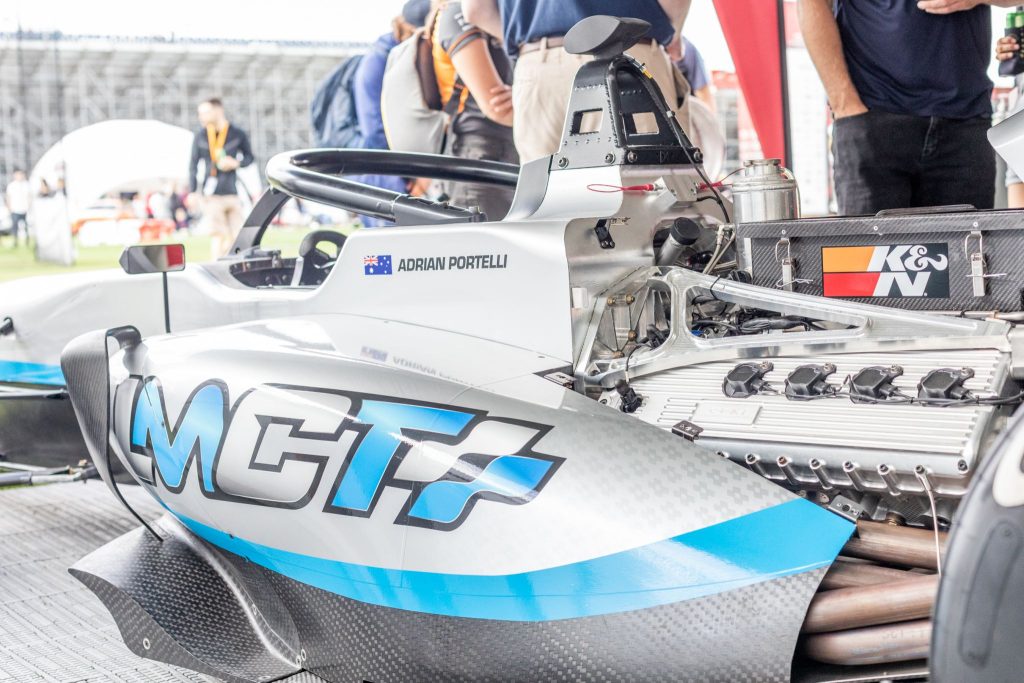Cold Spray 3D printer manufacturer SPEE3D has showcased an impressive new batch of metal racing car parts produced via its technology at the 2022 Australian Grand Prix.
Presented at a stall near the Albert Park circuit on Formula 1 race weekend, the prints on-show suitably demonstrated the outright speed and precision at which the firm’s WarpSPEE3D system is now capable of operating.
Developed for client Garry Rogers Motorsport, a team competing in the S5000 and TCR race series, these components varied from hefty 6.8-kilo structural elements to wheel inners, illustrating the end-use production potential of SPEE3D’s rapid 3D printer, on a weekend in which Australia-based motorsport was in the headlines.
“It was exciting to showcase our technology at this fantastic event here in Melbourne,” Byron Kennedy, CEO of SPEE3D said of the event. “SPEE3D’s technology is the world’s fastest way to make metal parts, and what better place to show this off than at the Grand Prix, which is all about speed and innovation!”
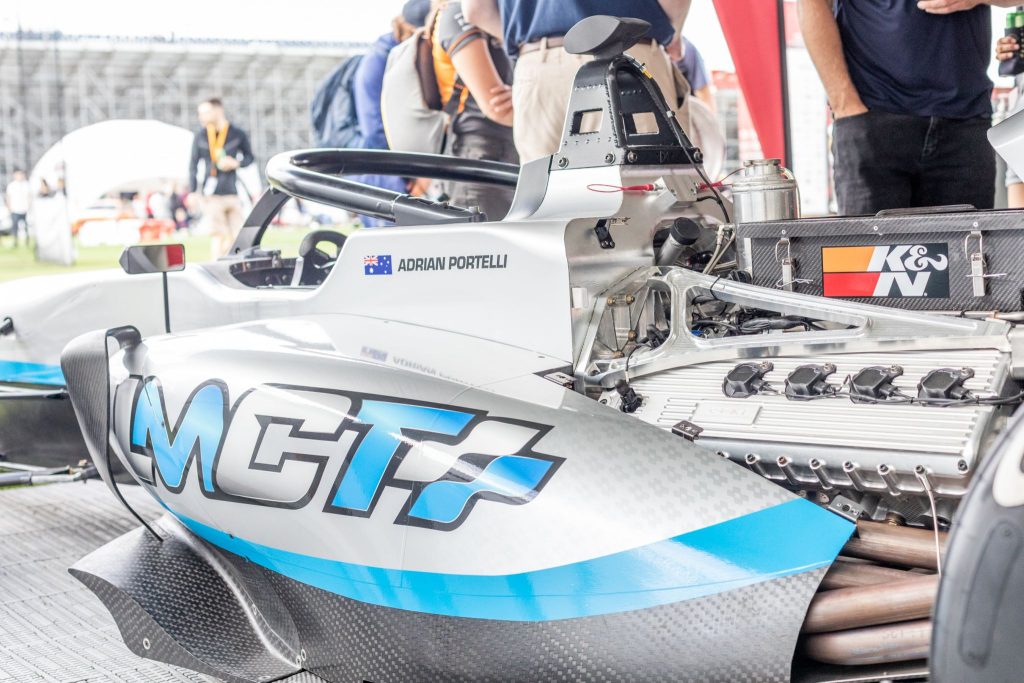
Cold Spray 3D printing technology
Co-founded by engineering innovators Byron Kennedy and Steven Camilleri, SPEE3D’s main item of business is marketing 3D printers that operate its proprietary Cold Spray technology. Unlike normal metal systems, which rely on high-powered lasers and expensive gasses, the firm’s approach relies on harnessing kinetic energy instead.
In practice, within SPEE3D’s WarpSPEE3D 3D printer, this means jetting metal powder into the build area via a compressed gas, in a way that gives the material the velocity to deform and fuse with the substrate upon impact. As well as being cheaper and more flexible than traditional production processes, the company also cites the unit’s print speed of up to 100 grams/minute as being the world’s fastest.
Given these advantages, it should be of no surprise that the technology continues to find wide-ranging applications, particularly within the defense sector. The Australian Army, for example, has trialed SPEE3D machines since at least 2014, most recently using it to 3D print armored personnel carrier spares in the nation’s remote Northern Territories.
In the past, the firm has also divulged plans to mass-3D print rocket engines with its systems, as part of the SPAC3D project. Since it was announced in July 2021, the program has seen SPEE3D receive AUD $1.25 million via the Australian Government’s Modern Manufacturing Initiative (MMI), to aid its development of Cold Spray produced propulsion systems designed to support the country’s space sector.
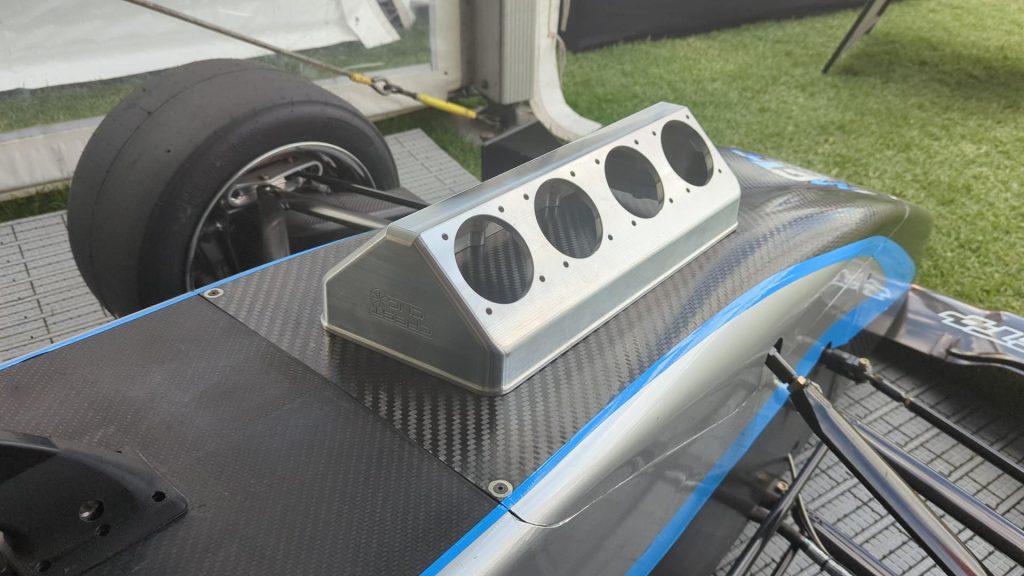
Showcasing at a temple of speed
At SPEE3D’s showcase, fans visiting the Australian Grand Prix for the on-track action were also treated to a display of some pretty impressive parts, as well as seeing dozens of metal objects being produced in real-time. This live exhibition, which took place at the circuit’s Versor Tech Hub, saw components up to 1000 x 700 mm in diameter being 3D printed, before being installed onto an S5000 race car.
Of the parts on display at the event, one of the stand-out pieces was a large aluminium rear housing, which took just five hours to print at a cost of $540, despite weighing in at 6.8 kilograms. Elsewhere, in heavier builds, SPEE3D also presented a 9-kilo wheel center, in which central discs were produced separately from the rims and attached together, in a lower-cost alternative to casting or machining.
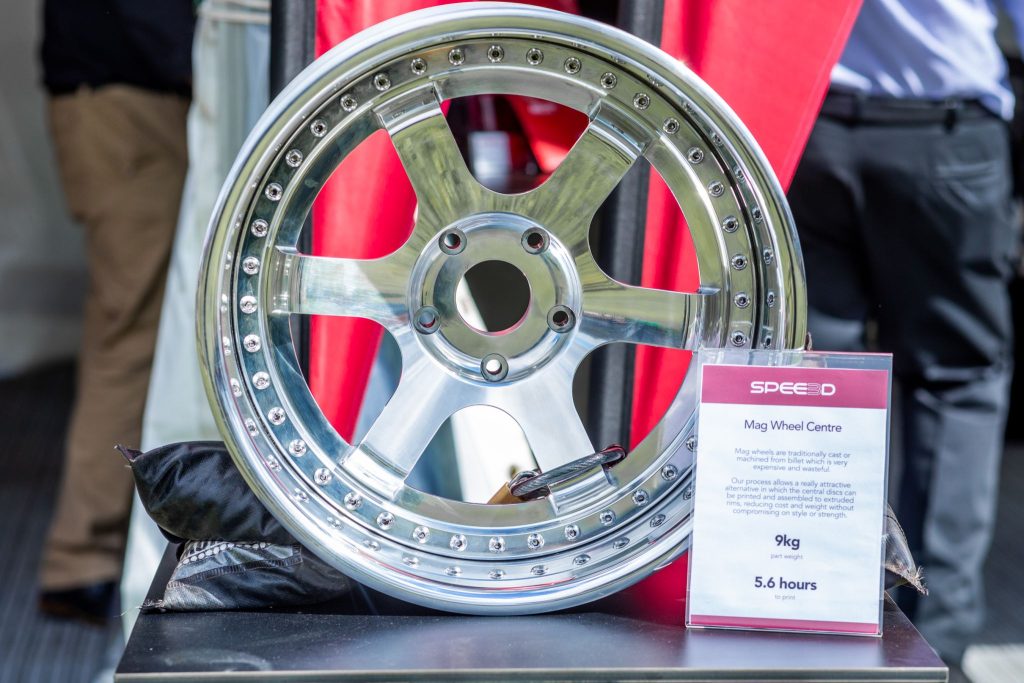
SPEE3D wasn’t shy about exhibiting parts with demanding use cases either, putting both a metal 3D printed intake manifold and S5000 support arm on-display, the latter of which is designed to be fitted next to the open-wheeler’s engine. Given that the team’s cars are powered by big 560bhp V8s that can hit speeds of up to 300 kph, the end-use components no doubt need very high thermal tolerances.
“Thanks to Byron Kennedy and SPEE3D for the Grand Prix tickets today, I had the best time,” said Alex Kingsbury, Additive Manufacturing Industry Fellow & Engagement Lead at RMIT University, who attended the event in-person. “And really cool to see the new demo parts on display, including the S5000 support arms (2 hour print time – beat that!!). Other highlights included bumping into the RMIT Formula SAE team and seeing some of the AMP’s 3D printed parts.”
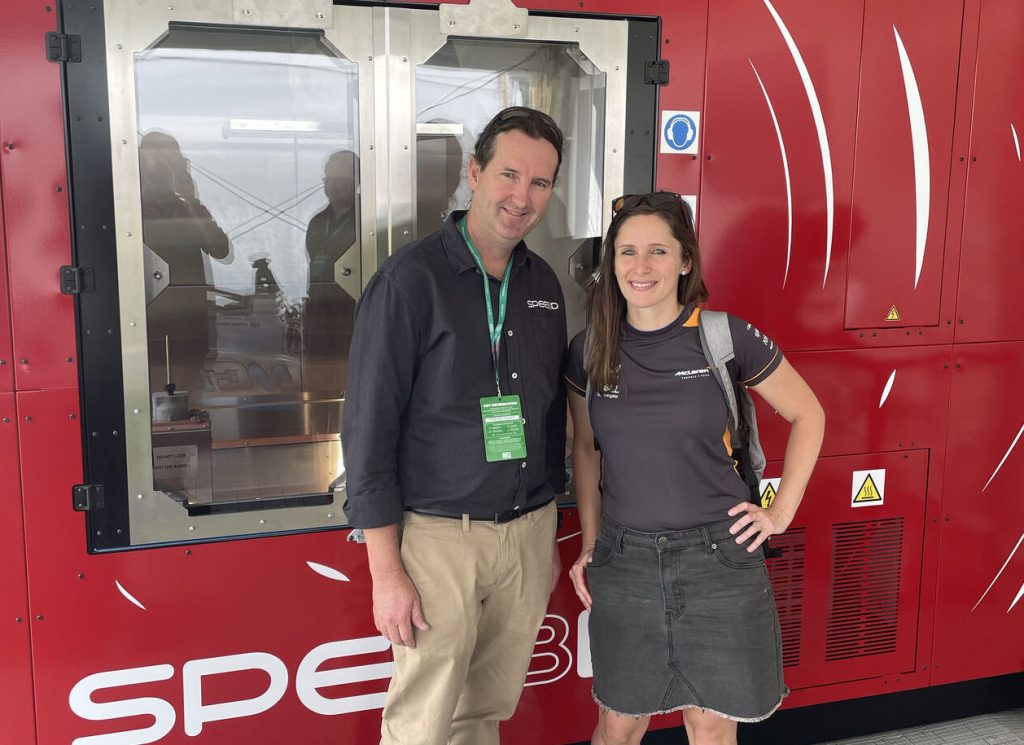
Additive manufacturing in auto-racing
In addition to being deployed in the commercial automotive world, 3D printing is now increasingly being applied in various different series of motorsport as well. In the MotoGP category, the Ducati Lenovo team recently revealed that Roboze has begun 3D printing fairing and heat shielding elements of its 2022 motorbike.
Larsen Motorsports, on the other hand, has integrated nScrypt 3D printed engine parts into its ‘Gen 6’ jet-powered dragster. Specifically, utilizing an ‘nRugged’ system, the firm has been able to replace the outdated gaskets on the fuel pumps of its car with more durable fabricated seals, which have since proven leak-free over a demanding six-month trial.
Elsewhere, even in the challenging world of Formula 1, the technology has been adopted by teams up and down the grid, albeit to varying extents. While McLaren Racing is known to have a long-standing partnership with Stratasys, the Alfa Romeo ORLEN team has fitted this season’s car with multiple end-use ‘critical’ F1 parts.
To stay up to date with the latest 3D printing news, don’t forget to subscribe to the 3D Printing Industry newsletter or follow us on Twitter or liking our page on Facebook.
For a deeper dive into additive manufacturing, you can now subscribe to our Youtube channel, featuring discussion, debriefs, and shots of 3D printing in-action.
Are you looking for a job in the additive manufacturing industry? Visit 3D Printing Jobs for a selection of roles in the industry.
Featured image shows a SPEE3D-printed aluminum support arm fitted to an S5000 race car. Photo via SPEE3D.
